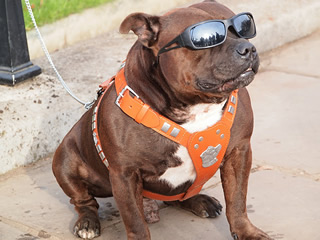Obedience dog training
Raising a dog should be a rewarding experience that brings you joy, not extra burden and endless source of frustration as is often the case with living with untrained dogs. Obedience dog training is not just about teaching a dog to perform tricks, but also to educate your dog what is acceptable and expected of him when living with humans. Getting it right from the start is easier than remolding a dog, so make sure you start training your dog at a young age. Your dog’s puppyhood is responsible for shaping his character, temperament and behavior habits for the rest of his life.
Dogs are pack animals that follow their leaders. The objective of obedience training is to establish yourself as the leader so your dog knows you are in charge and need to be respected. If your dog recognizes your authority, he will be more obedient, more secure and easier to control. You should let your dog know you are the boss as soon as he enters your house. How to do this is the objective of obedience training.
Obedience training courses
If this is your first time raising a dog, you should send your puppy to an obedience training class. Many people take their puppies to puppy kindergarten as well as obedience training class. Most of these classes are aimed for puppies between 10 weeks to several months old. Give your puppy obedience training at an early age to cultivate good habits. The purpose of these obedience training classes is to teach your dog simple cues, house manners and relationship-forming games.
In puppy kindergarten and obedience classes, paying attention to you is one of the first lessons a puppy learns. To learn commands and tricks, your puppy must first learn to focus on you when he's asked to.
Ask the trainer if you may observe a class so you can check out the environment and the people there. Look out for whether other dogs and owners are enjoying themselves. The dogs-to-trainer ratio should be less than five, location clean and secured with doors closed and floor free of debris and non-slippery, and the tools used should be safe and well maintained.
Obedience training at home
Besides sending your dog to training classes, you should also cultivate good behavior at home. Remember to use lots of encouragement and praise when obedience training your puppy. Keep your sessions short and fun to cope with their short attention span. Be patient and use repetitions until good behavior becomes natural to your dog. Puppyhood training should be a very joyful time where you lay the foundation for your puppy’s life and develop mutual trust with each other.
The Essential lessons of obedience training |
|
|---|---|
| Note about reward | |
Potty Training Your Puppy
Potty training is about teaching your dog to urinate and poo at a designated place. It is an important part of obedience training to keep your house clean and make the experience of raising a dog more rewarding. Follow my “Potty Training Puppies” guide to housebreak your dog.
Dog Crate Training
Dog crate is an important item in obedience training especially when you are trying to housebreak your puppy. Despite how you may feel about the dog crate, your puppy naturally think of it as his den, a place where he can go to seek comfort and safety. If your puppy is reluctant about the crate at first, you can use positive reinforcements, like offering treats and toys, to encourage him to go in. As your dog grows older, you can train him to tolerate longer periods in the crate.
Dog Leash Training
One of obedience training’s lessons is to teach your dog not to pull on the leash. By pulling on the leash, tension on the neck can lead to injuries and big dogs may be too powerful for children to control. The right way to walk a dog on leash is to make him walk beside you, also called heeling. When you run, he has to run. When you stop, he has to stop. Teaching your dog to walk beside you can prevent him from running towards other people or animals because your dog knows he is not supposed to stray from your side.
The secret in teaching your dog to walk beside you is to establish yourself as the pack leader. Dogs are pack animals, once your dog views you as a pack leader, he will follow your lead and obediently walk beside you. To establish yourself as the pack leader:
- When you leave the house, make sure you are the one to walk through the door first to show you are leading the walk.
- Pull against the leash and change direction every time your dog walks ahead of you. Over time, your dog will learn to pay attention to where you are going instead of going where he wants.
Basic Command Training
Teaching your dog basic commands is a must before moving on to other obedience training. All basic commands are important for training and communicating with your dog. The basic commands you should teach your dog are:
| Sit | Lie Down |
| Stay | Come |
- Stand in front of your dog.
- Show your dog a treat and put it in your hand.
- Slowly move your hand with the treat over your dog’s head and toward his tail.
- Give him the command “sit”.
- As you continue to move your head toward his tail, your dog will automatically sit to keep his eye on your hand. Right when your dog sits, praise him and give you the treat.
Teaching your dog to lie down:
- Command your dog to sit.
- Show your dog a treat and put it on the floor directly in front of him.
- Pull the treat away from the dog as you say “lie down”.
- The dog will automatically lean forward and lie down as you move the treat away from him.
- Praise him and give him the treat after he gets into lying down position.
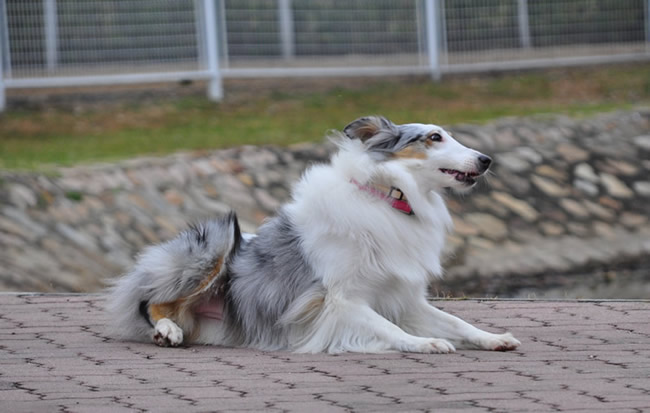
How to train your dog to stay:
- Make your dog sit.
- Command your dog to stay by saying “stay” and giving a stay hand signal (like a police officer).
- Slowly walk backwards away from your dog while keeping the hand signal.
- If your dog moves or gets up immediately return the initial position and repeat steps 1-3.
- Start with short distance and short period. Praise your dog and give him a treat once he has stayed for an appropriate amount of time. You can extend the distance and time once he gets the hang out it.
Teaching your dog to come to you:
- Start by making your dog sit and stay
- Walk away from the dog without giving additional commands
- When you are far enough from your dog, face your dog and ask your dog to “come” in an excited voice
- Praise and reward your dog after he runs over to you
Dog clicker training
Clicker training is a form of positive reinforcement commonly used in obedience training that can replace giving treats to a dog. It is more effective in dog training because a click is much faster and distinct than saying "good dog". To teach a dog the meaning of a click, give the dog a treat immediately after clicking. Once the dog associates the clicking sound with treats, the clicker itself acts as a positive reinforcement.
To begin using the clicker, you must first teach your dog to associate the click with something good. Start by associating the clicker with small treats. Put the clicker behind your back, click it, and give your dog a treat. Do this for thirty repetitions to teach your dog to associate the click with the treat. By the 20th repetition, your dog should start to look for a treat when you click and you are now ready to taech your dog using the clicker.
Teach your dog to stop biting
This is something you must teach your dog at a young age to prevent him from hurting people and other animals. Puppy biting or nipping is natural when the dog is growing new teeth. But this behavior can go out of control if your puppy grows up without obedience training in biting. The key here is to let your puppy know his bites can hurt you. After your puppy grows new teeth and his bites genuinely hurt, you must teach your dog not to bite. To do this, yell “ouch” and express great pain when he nips you too hard. If you do it correctly, your puppy will pay attention to you and understand he has hurt you. Over time, your puppy will be especially careful when playing bite with your hand.
Stop your dog from chewing
Chewing problem is often caused by boredom or loneness and usually happens when you leave your puppy alone at home for too long. Although you can reduce chewing by spending every second with your puppy, it is unavoidable that he will be left alone from time to time. To reduce the likelihood of chewing during these times, you can:
|
Stop your dog from barking at everything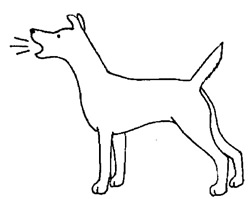
If your dog is on a leash, give him a snap and stare at him with a serious face so he understands barking is not allowed. If you are at home, shoot your dog with a water pistol and stare at him with the serious look whenever barking is discouraged. Do not try to calm your dog by petting him – your dog will take this as positive reinforcement. Only after your dog has calm down should you reward or praise him.
Helping your dog cope with separation anxiety
Dogs are pack animals that enjoy companionship. When left alone, they are prone to separation anxiety which leads to problems like biting, chewing and whining. Obedience training includes teaching your dog to be independent so he won’t cause trouble when left alone. Use the following lesson to improve your dog’s independency.
Teaching your dog to be independent
- Command your dog to sit near the door
- Pretend to leave the house by going out and closing the door
- Your dog may start whining if he has developed separation anxiety
- Open the door and ask him to quiet. This will reduce his anxiety
- Repeat the procedure but increase the duration before opening the door.
- As you repeat this lesson, it will take longer for your dog to become nervous and eventually he will be ok being left alone
Read more about separation anxiety here.
Other things you can do to reduce separation anxiety are:
- Leave the radio or TV on a low volume, the voice of people can calm your dog
- Use a treat dispensing toy to keep him busy
- Tire your dog out by giving him a lot of exercise
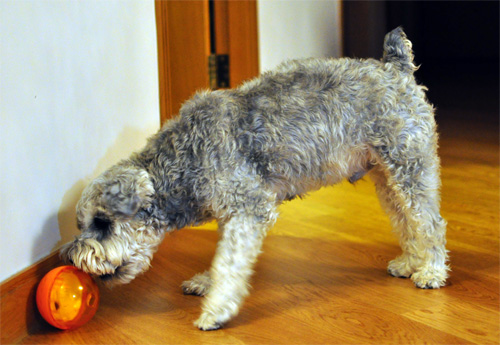
Use a treat dispensing toy like this to keep your dog busy
Dog aggression is caused by their natural instincts. In the wild, animals display aggression for dominance, self defense and territorial reasons. The same is true for dogs and it is natural for them to display aggression. But in order for dogs to fit into our human society, we must reduce their aggression levels. During obedience training, your goal is to familiarize your puppy with other dogs through socialization. If done properly, your dog will get along better with other dogs and you will encounter less dog aggression problems.
Dog Socializing
The best time to socialize your puppy with other dogs is when he is between 10-16 weeks of age. During this time, your puppy is more receptive to new experiences and these experiences will have a major influence on his future temperature and character. The goal of socialization is to get your puppy familiar with other dogs, humans and everyday objects. Introduce your puppy to your friends, family and people that visit your home often. When your puppy has completed his vaccination course, you can take him out to puppy parties or the park to socialize with other dogs. Make sure you puppy has fun and receives a positive experience socializing or else he may be fearful for life. Finally, familiarize your puppy with everyday objects that he may otherwise be afraid of. These include vacuum cleaners, hair dryers, traffic noise, noisy children and riding in a car.
Read more about dog socialization here.
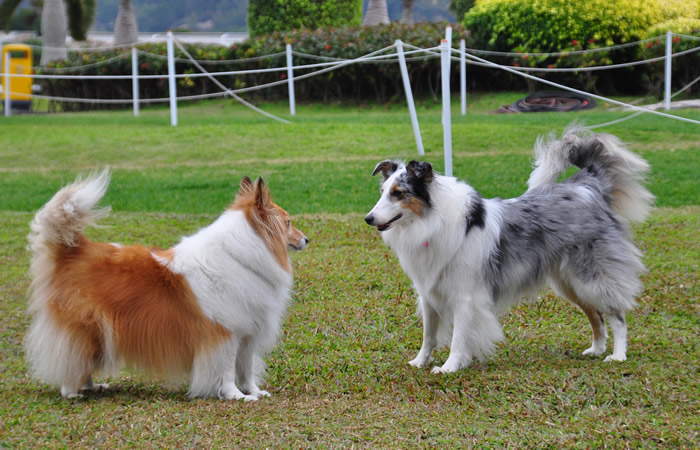
Stop your dog from jumping on you
A must-learn obedience lesson if you are raising big dogs that can knock you over when they are fully grown. Start on the right track by showing you disapprove of jumping. When your puppy jumps because he is excited to see you home, you must turn away and ignore him. Wait till he is sitting calmly then you may pet and praise him. In his mind, he will associate your praising with sitting calmly as you return home.
If your puppy jumps on you because he is trying to show dominance, you must firmly tell him to get off and use a serious facial expression to let him know you disapprove of it.
A note about rewarding your dog during training
Dog training is about positive reinforcements such as giving him a treat, praising him or giving him a good belly rub. But keep in mind that when you are training your dog, you don't want to flood him with so much positive reinforcements that he becomes super hyper and forgets the obedience lesson. For example, when your dog sits while you are teaching him how to sit, simply give him the treat and call him a good boy instead of doing that and start hugging him. Over rewarding during obedience training can be a major distraction for your dog.

